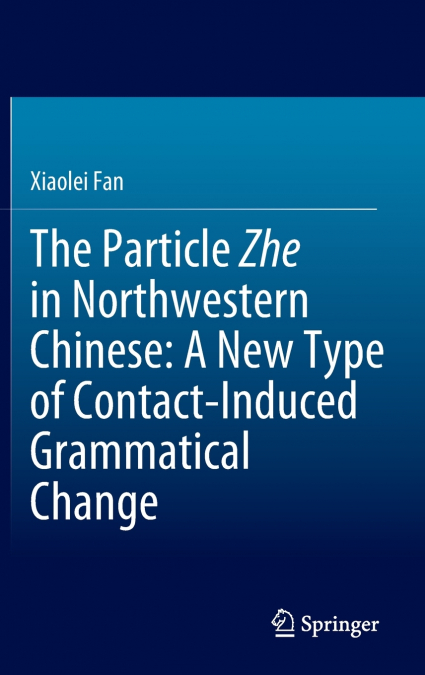
Xiaolei Fan
This book presents an analysis of a particular grammatical phenomenon in Northwestern Chinese, a.k.a. Northwestern Chinese dialects, uncovering a new pattern of contact-induced changes, which can be termed 'compromise innovation'. In the vast majority of Northwestern Chinese dialects, the imperfective marker Zhe, which behaves like a verb suffix in most Chinese dialects, exhibits a number of peculiar characteristics. The most prominent one is that it occurs in an unusual syntactic position where no verb suffix is expected to occur; i.e., it is placed after the object ('V+O+Zhe') rather than immediately following the verb ('V+Zhe+O'). Given that the grammaticalization of Zhe in Classical Chinese from a verb to an imperfective marker took place while Zhe was being used in the 'V+Zhe+O' structure, the 'V+O+Zhe' construction in Northwestern Chinese is likely the result of a more recent change. Furthermore, in a group of Northwestern Chinese dialects, there are various grammatical types of 'VP1+Zhe+VP2' constructions in which Zhe occurs at the end of VP1 to mark the syntactic dependency between VP1 and VP2. In this usage, Zhe is no longer an imperfective marker, but rather, similar to a converb marker. This phenomenon challenges the conventional view that Chinese is a typical verb-serializing language. The book argues that the grammatical peculiarity of Zhe in Northwestern Chinese is a result of syntactic change induced by the contact with the non-Han languages (i.e. non-Chinese) spoken in Northwest China, including Mongolic, Turkic and Tibetan languages. The 'V+O+Zhe' configuration, as the most distinctive phenomenon in this change, reflects a compromise between the two types of languages in contact: in such a configuration, the canonical VO order of Chinese is maintained, and meanwhile, by moving the verb suffix to the clause-final position, it also complies with the verb-final trait of the non-Han languages. In addition, there are many differences between Zhe in Northwestern Chinese dialects and the corresponding grammatical forms in non-Han languages in Northwest China. This indicates that the innovative evolution of Zhe in Northwestern Chinese faces certain constraints, and it is found that these constraints essentially stem from the inherent grammatical properties of the imperfective Zhe and various predicative structures in Chinese. The usages of Zhe discussed in this book vividly demonstrate the fact that the contact-induced change is a consequence of processes by which the 'external soil' of another language (i.e. source language) and the 'internal genes' of the native language (i.e. recipient language) compete against one another. This study may present an interesting case illuminating the very nature of language as a self-organizing and adaptive system, and refresh the linguistic typology community’s perspective on grammatical changes induced by language contact.